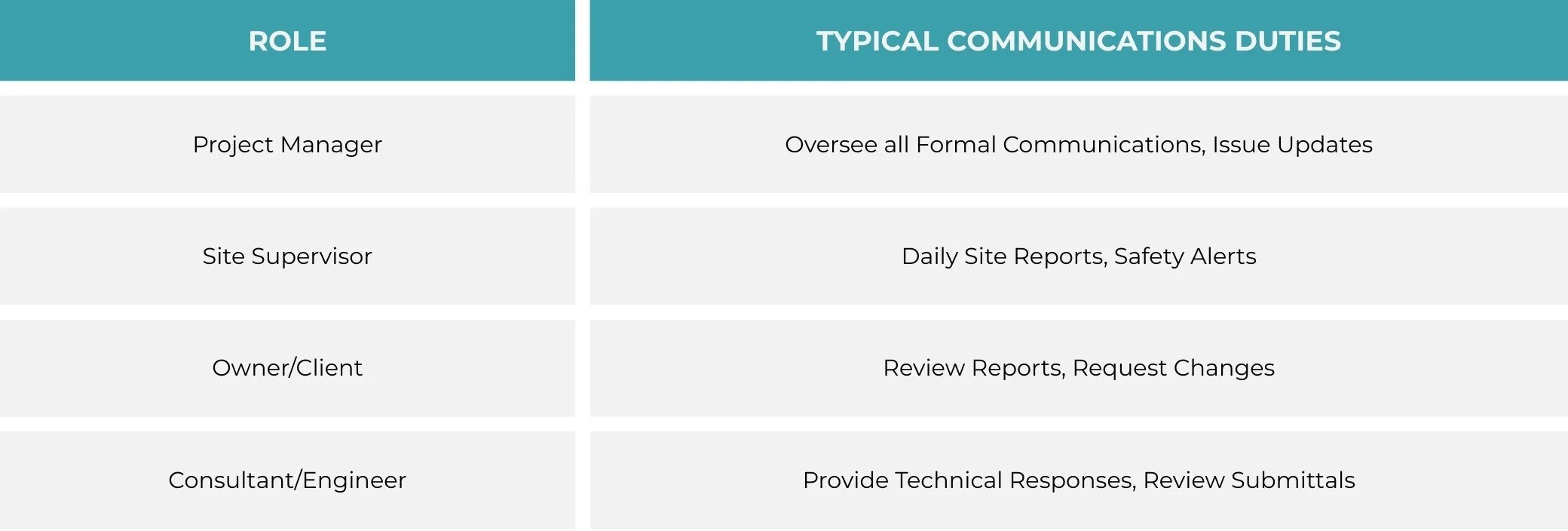Which Section of the Specification Outlines Communications Requirements?
On a construction project, clear communication is just as important as engineering or safety. It helps everyone stay informed, solve problems quickly, and keep the project moving forward.
But who decides what to communicate—and when?
That’s where the communications requirements come in. These requirements are not made up as you go. They are written down in formal project documents.
Let’s examine:
What communication requirements are
Why they matter
Which documents include them
What sections to look for
How they are used in real projects
What happens when communication requirements are missing or unclear
Who is responsible for communication on a construction site
Let’s start by defining what we mean by communication requirements.
1. What Are Communication Requirements?
Communication requirements are the rules, processes, and expectations for how people will share information during a construction project.
They explain:
What information needs to be shared
Who needs to receive it
When it should be sent
How it should be sent (email, meetings, reports, etc.)
Who is responsible for sending it
These requirements help teams avoid confusion, delays, and conflict.
2. Why Are Communication Requirements Important?
Construction projects involve many different people:
Owners
Contractors
Engineers
Architects
Government inspectors
Subcontractors
The public
Without clear communication rules, things can fall apart. A missed update can lead to delays, and a misunderstood instruction can lead to safety risks or extra costs.
Example:
If a contractor starts pouring concrete before the engineer reviews the forms, the structure may be at risk. That’s a communication breakdown.
Communication requirements help everyone stay aligned and reduce the chance of mistakes.
3. Which Document Outlines Communication Requirements?
In most construction projects, communication requirements are found in the Project Management Plan (PMP), which is the main document that outlines how the entire project will be managed.
Inside the Project Management Plan, you’ll often find a section called the Communications Management Plan or Project Communications Plan.
This section is where the communication requirements live.
Other Documents That May Include Communication Guidelines:
Tender documents / RFPs
These may outline communication expectations before a contract is awarded.Construction contract
This includes legal rules about notices, updates, and approvals.Construction specifications (Division 01)
Division 01 is the general requirements section in a spec book. It often covers reporting and meeting requirements.Public engagement plans
If the project affects the public, this plan will include how you must communicate with the community.Indigenous consultation protocols
For projects on or near Indigenous land, specific communication duties may be tied to agreements or legal processes.
4. What Does a Communications Plan Include?
A Communications Plan can vary depending on the project, but it typically includes these key parts:
A. Stakeholder List
Who needs information? The project team, clients, subcontractors, regulators, or the public may all need it.
B. Information Types
What kinds of information will be shared? Examples:
Progress reports
Safety alerts
Design changes
Meeting minutes
Incident reports
Community updates
C. Frequency and Timing
How often will updates be sent? Daily, weekly, or monthly? When are reports due?
D. Formats and Tools
Will updates be given by email, PDF reports, virtual meetings, phone calls, or on-site signage?
E. Communication Matrix
F. Roles and Responsibilities
Who owns the communication tasks? For example:
The Project Manager might send formal progress reports
The Site Supervisor might log daily reports
The Communications Consultant might handle public updates
5. Where in the Contract Documents Can You Find These?
Look in these key areas:
A. Division 01 – General Requirements
Part of the construction specifications. It often includes:
Meeting requirements
Submittal procedures
Communication protocols
Documentation formats
Roles and reporting expectations
B. Special Provisions or Supplemental Conditions
Sometimes found in large infrastructure contracts, this section may set communication rules related to:
Traffic interruptions
Environmental monitoring
Emergency updates
Public relations efforts
C. Appendices
Public communications plans, community engagement frameworks, and third-party communication standards are often included as appendices in large project agreements.
6. What Happens When Communication Requirements Are Missing?
When communication expectations are not clearly outlined, problems are likely to happen:
Missed deadlines
Unclear approvals
Wrong materials installed
Public backlash
Legal claims or delays
Example:
If there’s no rule about how to tell neighbours about weekend work, the project might face complaints, or even a work stoppage.
A well-written communications plan reduces these risks.
7. Real-World Example: LRT Expansion Project
In a large Light Rail Transit (LRT) project, communications were handled through multiple layers:
A Project Communications Plan guided internal updates and team meetings
A Public Engagement Plan outlined how to notify residents of road closures
A Crisis Communication Procedure covered what to do if an accident occurred
A Construction Contract listed the exact timelines for progress reports
This multi-layered approach helped keep the public informed and reduced complaints.
8. Who Is Responsible for Communication?
Communication is a team effort, but some roles carry more responsibility.
On large projects, a professional communications team (like reVerb) may be hired to manage stakeholder relations, public notices, and engagement plans.
9. How reVerb Can Help
Not every construction team has full-time communications staff. That’s where reVerb Communications comes in.
reVerb specializes in:
If your project needs strong communication, especially in complex or high-profile settings, reVerb helps ensure nothing gets missed.
Clear communication reduces risk and builds trust, whether it’s a major infrastructure build or a community-facing development. reVerb helps you do both.
Final Thoughts
The communication requirements for a construction project are not random; they are written down, organized, and legally important.
They are usually found in:
The Project Management Plan
The Communications Plan
Division 01 of the construction specs
Tender packages and contracts
Knowing where to find these requirements—and how to use them—can make a big difference.
When teams follow a clear communications plan, projects run more smoothly, issues get solved faster, and public trust improves.
And when you need help creating or carrying out that plan, experienced professionals like reVerb Communications are ready to support you every step of the way.




